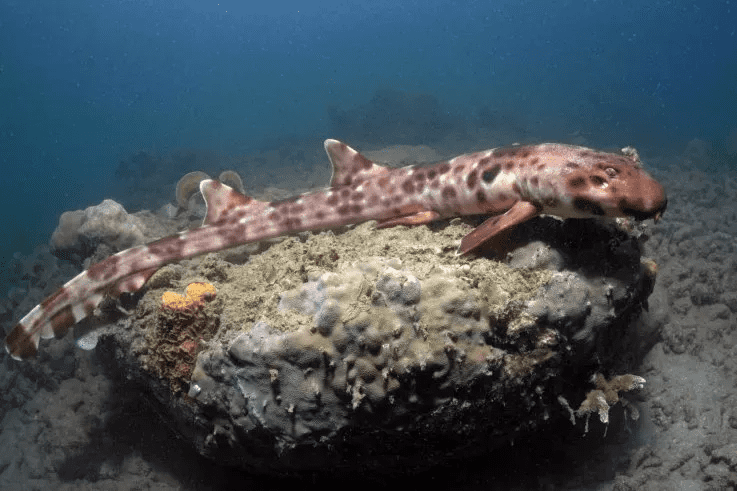Four tropical shark species have been caught in the act: using their fins not to swim, but to walk.

As if sharks weren’t amazing enough, some of them have apparently started walking. Four species of sharks living in coastal waters around Australia and New Guinea have been spotted using their fins to walk on rocks and in very shallow water.
The walking sharks were discovered during a 12-year study with Conservation International, a joint effort involving researchers from the CSIRO, Florida Museum of Natural History, the Indonesian Institute of Sciences and Indonesian Ministry of Marine Affairs and Fisheries.
The sharks reportedly use this technique to hunt. According to Dr. Christine Dudgeon, from University of Queensland, ornate sharks are already on top of the food chain. Now, they are using their fins during low tides, walk-crawling in shallow water to get an extra edge.
“At less than a metre long on average, walking sharks present no threat to people but their ability to withstand low oxygen environments and walk on their fins gives them a remarkable edge over their prey of small crustaceans and molluscs,” Dr Dudgeon said.
“These unique features are not shared with their closest relatives the bamboo sharks or more distant relatives in the carpet shark order including wobbegongs and whale sharks.”
We don’t really know when this started. It may be a novel process, but it may have also started a long time ago.
However, researchers do suggest that the evolution of these sharks was influenced by tectonic movement in the area — particularly the tectonic plate movement approximately 20 to 5 million years ago that completed Australia’s break-up from the supercontinent Gondwana.
This movement triggered a series of fluctuations in the area and produced a unique environment where a number of species thrived. This created not only new possibilities for species, but also barriers and isolation — and this isolation tends to lead to the development of new, unique species.
It may very well be that this tectonic movement millions of years ago is responsible for walking sharks today.
“Data suggests the new species evolved after the sharks moved away from their original population, became genetically isolated in new areas and developed into new species,” Dudgeon said in a statement.
“They may have moved by swimming or walking on their fins, but it’s also possible they ‘hitched’ a ride on reefs moving westward across the top of New Guinea, about two million years ago.
However, these aren’t the first sharks to exhibit this type of behavior. Four new species have been observed now, raising the total number to nine — in a remarkable example of convergent evolution.
They are also probably not the last we find, Dudgeon notes.
“We believe there are more walking shark species still waiting to be discovered,” she concludes.
The study has been published in Marine and Freshwater Research.





